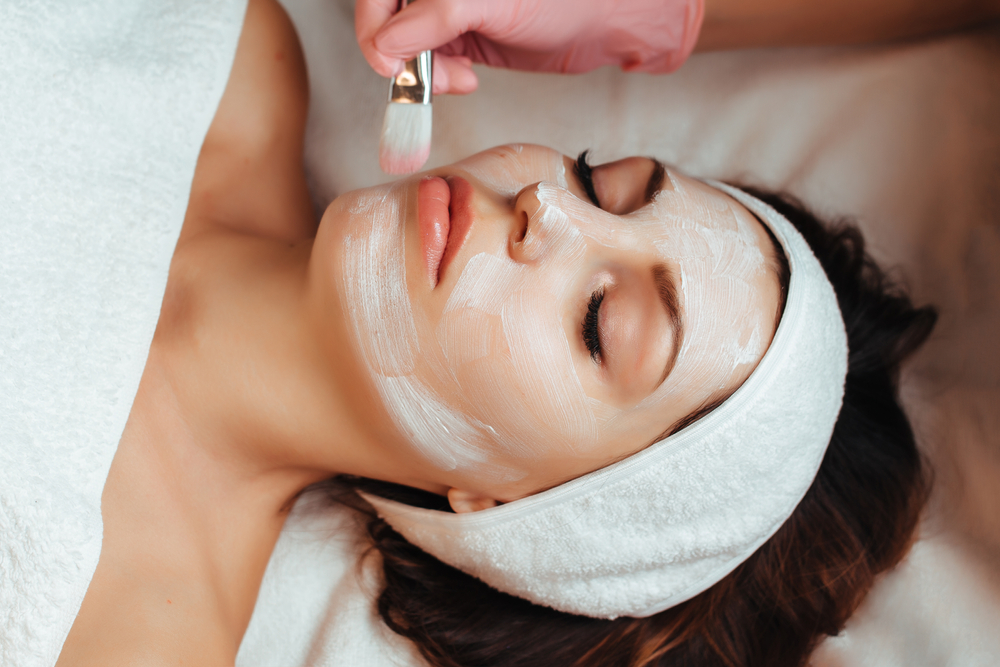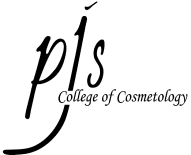September 4, 2025
Skin Analysis and Advanced Facial Treatments: Professional Esthetics Guide

Professional Skin Analysis and Advanced Facial Techniques: Complete Esthetics Guide
Professional skin analysis forms the foundation of effective esthetic treatments, allowing practitioners to customize services that address specific client concerns while avoiding contraindicated procedures. This comprehensive guide covers advanced skin assessment techniques, professional treatment protocols, and the latest innovations in facial therapy that distinguish professional estheticians from basic skincare providers.
Fundamentals of Professional Skin Analysis
Understanding Skin Physiology
Epidermal Structure and Function:
- Stratum Corneum: Outermost protective barrier controlling moisture loss and protection
- Stratum Lucidum: Clear layer found only in thick skin areas like palms and soles
- Stratum Granulosum: Granular layer where keratin production begins
- Stratum Spinosum: Spiny layer providing strength and flexibility
- Stratum Basale: Deepest layer where new skin cells are produced
Dermal Components:
- Papillary Dermis: Upper dermis containing capillaries and nerve endings
- Reticular Dermis: Deeper layer containing collagen and elastin fibers
- Collagen Fibers: Provide skin structure and firmness
- Elastin Fibers: Give skin elasticity and ability to return to original shape
- Ground Substance: Gel-like matrix that maintains hydration and supports cellular function
Skin Functions and Barrier Protection:
- Acid Mantle: Natural pH barrier (4.5-5.5) that protects against bacteria and environmental damage
- Lipid Bilayer: Fatty acid structure that prevents water loss and maintains barrier integrity
- Natural Moisturizing Factors (NMF): Humectants that attract and retain moisture
- Immune Function: Langerhans cells that provide first line of defense against pathogens
Visual and Tactile Assessment Techniques
Systematic Visual Examination
Lighting Requirements for Accurate Analysis:
- Natural Daylight: Best for true color assessment and overall skin evaluation
- Magnifying Lamp: 3-5x magnification reveals surface texture and minor imperfections
- Wood’s Lamp: UV light reveals pigmentation irregularities and bacterial issues
- Polarized Light: Eliminates surface reflection for deeper skin assessment
Visual Assessment Categories:
Skin Tone and Color:
- Fitzpatrick Scale: Classification system (I-VI) for sun sensitivity and pigmentation
- Undertones: Warm (yellow/golden), cool (pink/red), or neutral combinations
- Hyperpigmentation: Areas of darker color from sun damage, hormones, or inflammation
- Hypopigmentation: Areas of lighter color from injury, infection, or genetic conditions
- Erythema: Redness indicating inflammation, sensitivity, or vascular issues
Texture and Surface Analysis:
- Smooth Texture: Healthy skin with minimal visible pores and even surface
- Rough Texture: Accumulated dead cells, sun damage, or inadequate exfoliation
- Bumpy Texture: Comedones, milia, or keratosis pilaris creating uneven surface
- Scarring: Atrophic (depressed) or hypertrophic (raised) scarring from acne or injury
Advanced Diagnostic Tools and Technology
Digital Skin Analysis Systems
Computer-Assisted Evaluation:
- Multi-Spectral Imaging: Different wavelengths reveal various skin conditions
- Standardized Photography: Consistent lighting and positioning for progress tracking
- Measurement Capabilities: Quantitative data on pore size, pigmentation, and texture
- Comparative Analysis: Before and after documentation for treatment effectiveness
Benefits of Digital Analysis:
- Objective Documentation: Removes subjective interpretation from skin assessment
- Client Education: Visual evidence helps clients understand their skin conditions
- Treatment Planning: Data-driven approach to customizing treatment protocols
- Progress Tracking: Measurable improvements demonstrated over time
Sebum Production Testing
Sebum Tape Analysis:
- Application Method: Special tapes applied to various facial areas
- Measurement Scale: Quantitative assessment of oil production levels
- Zone Mapping: Different areas of face may show varying sebum levels
- Treatment Implications: Results guide product selection and treatment frequency
pH Testing and Barrier Function
Skin pH Assessment:
- Electronic pH Meters: Digital devices providing accurate readings
- pH Indicator Strips: Color-change strips for quick assessment
- Significance of Results: pH imbalances indicate barrier dysfunction or product incompatibility
- Treatment Modifications: Adjusting products and treatments based on pH readings
Skin Condition Identification and Classification
Acne Analysis and Classification
Non-Inflammatory Acne Lesions:
- Comedones: Blackheads (open) and whiteheads (closed) formed by clogged pores
- Microcomedones: Early-stage clogged pores not yet visible to naked eye
- Distribution Patterns: Location indicates potential causes (hormonal, environmental, mechanical)
Inflammatory Acne Lesions:
- Papules: Small, red bumps indicating bacterial infection and inflammation
- Pustules: White-headed lesions containing pus and bacteria
- Nodules: Deep, painful lesions extending into dermis
- Cysts: Large, pus-filled lesions that may cause scarring
Acne Severity Grading:
- Mild Acne: Primarily comedones with few inflammatory lesions
- Moderate Acne: Multiple papules and pustules with some deeper lesions
- Severe Acne: Numerous inflammatory lesions, nodules, and cystic formations
- Treatment Implications: Severity level determines appropriate intervention strategies
Aging and Photodamage Assessment
Intrinsic Aging Signs:
- Fine Lines: Natural expression lines and age-related collagen loss
- Skin Thinning: Reduced dermal thickness affecting skin resilience
- Decreased Elasticity: Loss of bounce and firmness due to elastin breakdown
- Slower Cellular Turnover: Accumulation of dead cells creating dull appearance
Extrinsic Aging (Photoaging):
- Solar Lentigines: Brown spots and age spots from sun exposure
- Telangiectasia: Broken capillaries and spider veins from UV damage
- Deep Wrinkles: Pronounced lines from repeated UV exposure and collagen damage
- Skin Discoloration: Uneven pigmentation and mottled appearance
Rosacea Identification and Subtypes
Erythematotelangiectatic Rosacea:
- Persistent Redness: Central facial erythema that doesn’t fade
- Visible Blood Vessels: Broken capillaries across cheeks and nose
- Flushing Episodes: Triggered by heat, stress, alcohol, or spicy foods
- Burning Sensations: Skin sensitivity and discomfort
Papulopustular Rosacea:
- Acne-like Breakouts: Papules and pustules in central face area
- Persistent Redness: Background erythema with superimposed lesions
- Skin Sensitivity: Increased reactivity to products and environmental factors
Professional Treatment Protocols
Deep Cleansing and Extractions
Pre-Extraction Preparation:
- Steam or Warm Compresses: Softening skin and opening pores for easier extraction
- Enzymatic Exfoliation: Breaking down dead cells and softening comedone plugs
- High Frequency: Optional antimicrobial treatment to reduce bacterial contamination
Safe Extraction Techniques:
- Proper Tool Selection: Comedone extractors, cotton swabs, or gloved fingers
- Correct Pressure Application: Gentle, even pressure to avoid tissue damage
- Antiseptic Procedures: Sterilizing tools and cleansing skin throughout process
- Post-Extraction Care: Antiseptic application and soothing treatments
Advanced Exfoliation Methods
Chemical Peels Classification:
Superficial Peels (Alpha Hydroxy Acids):
- Glycolic Acid: Smallest molecular size, deepest penetration of AHAs
- Lactic Acid: Gentler option with moisturizing properties
- Mandelic Acid: Large molecule, slower penetration, good for sensitive skin
- Tartaric Acid: Often combined with other AHAs for enhanced effectiveness
Medium-Depth Peels:
- Trichloroacetic Acid (TCA): Professional-strength peels for significant improvement
- Jessner’s Solution: Combination of salicylic acid, lactic acid, and resorcinol
- Professional Application: Requires advanced training and careful monitoring
Beta Hydroxy Acids (Salicylic Acid):
- Oil Solubility: Penetrates into oily pores for deep cleaning action
- Anti-Inflammatory Properties: Reduces redness and irritation
- Acne Treatment: Particularly effective for comedonal and inflammatory acne
- Concentration Variations: 0.5% to 30% depending on treatment goals
Mechanical Exfoliation Options:
- Microdermabrasion: Crystal or diamond-tip abrasion for surface smoothing
- Dermaplaning: Surgical blade removal of dead cells and vellus hair
- Enzyme Exfoliation: Natural fruit enzymes for gentle cell renewal
- Ultrasonic Exfoliation: High-frequency vibration for deep pore cleansing
Specialized Treatment Modalities
LED Light Therapy
Red Light Benefits (630-700nm):
- Collagen Stimulation: Promotes fibroblast activity and new collagen formation
- Wound Healing: Accelerates cellular repair and reduces inflammation
- Circulation Enhancement: Improves blood flow and oxygen delivery to tissues
- Treatment Protocols: Typically 10-20 minute sessions, multiple times weekly
Blue Light Applications (415nm):
- Antimicrobial Action: Destroys P. acnes bacteria causing inflammatory acne
- Sebum Regulation: May help reduce excessive oil production
- Combination Therapy: Often used with topical treatments for enhanced results
- Safety Considerations: Eye protection required during treatment
High Frequency Treatments
Direct Method Applications:
- Glass Electrode Contact: Direct skin contact for localized treatment
- Antimicrobial Effects: Ozone production kills bacteria and fungi
- Circulation Stimulation: Increases blood flow and cellular metabolism
- Specific Conditions: Effective for acne, aging, and poor circulation
Indirect Method Benefits:
- Gauze Application: Electrode applied over gauze for broader coverage
- Gentle Stimulation: Less intense treatment for sensitive skin
- Relaxation Response: Calming effect on nervous system
- Versatile Application: Can treat larger areas effectively
Ultrasonic Treatments
Cavitation Effects:
- Deep Cleansing: Microscopic bubbles remove impurities from pores
- Product Penetration: Enhances absorption of treatment products
- Cellular Stimulation: Promotes circulation and lymphatic drainage
- Exfoliation Benefits: Gentle removal of dead skin cells
Contraindications and Safety Protocols
Absolute Contraindications
Infectious Conditions:
- Active Herpes Simplex: Viral infections that can spread during treatment
- Bacterial Infections: Impetigo, cellulitis, or other bacterial skin conditions
- Fungal Infections: Ringworm or other communicable fungal conditions
- Open Wounds: Any break in skin integrity that could become infected
Medical Contraindications:
- Recent Chemical Peels: Skin may be too sensitive for additional treatments
- Retinoid Use: Medications causing increased photosensitivity and skin fragility
- Autoimmune Conditions: Diseases affecting healing and immune response
- Pregnancy Considerations: Certain treatments and products to avoid
Relative Contraindications
Temporary Conditions:
- Sunburn or Recent Sun Exposure: Increased sensitivity requiring treatment modification
- Hormonal Fluctuations: Menstruation, pregnancy, or medication changes affecting skin
- Recent Hair Removal: Waxing or shaving creating temporary skin sensitivity
- Product Reactions: Recent allergic reactions or product sensitivities
Treatment Planning and Customization
Developing Individual Treatment Plans
Assessment Integration:
- Combining Analysis Results: Synthesizing visual, tactile, and technological findings
- Priority Identification: Determining most significant concerns to address first
- Realistic Goal Setting: Establishing achievable outcomes within appropriate timeframes
- Budget Considerations: Creating plans within client’s financial parameters
Treatment Sequencing:
- Progressive Approach: Starting with gentle treatments and advancing intensity
- Combination Strategies: Using multiple modalities for enhanced results
- Maintenance Planning: Establishing long-term care protocols
- Seasonal Adjustments: Modifying treatments based on environmental factors
Client Education and Home Care
Product Recommendation Strategies
Evidence-Based Recommendations:
- Ingredient Knowledge: Understanding active ingredients and their mechanisms
- Skin Type Matching: Selecting products appropriate for individual skin conditions
- Usage Instructions: Proper application techniques and timing
- Realistic Expectations: Educating about timeframes for visible improvements
Home Care Compliance:
- Simple Routines: Creating manageable daily regimens clients will follow
- Progress Monitoring: Regular check-ins to adjust recommendations
- Education Materials: Providing written instructions and product information
- Support Systems: Ongoing guidance and troubleshooting assistance
Professional Development and Advanced Training
Continuing Education Requirements
Industry Certifications:
- Advanced Facial Techniques: Specialized training in complex treatments
- Chemical Peel Certification: Safe application of professional-strength peels
- Equipment Training: Proper use and maintenance of treatment devices
- Skin Condition Specialization: Focus on specific conditions like acne or aging
Business Development Through Expertise
Specialization Benefits:
- Premium Pricing: Advanced skills command higher service fees
- Client Retention: Expertise builds trust and loyalty
- Referral Generation: Satisfied clients become sources of new business
- Professional Recognition: Reputation as skilled practitioner in community
At PJ’s College of Cosmetology, our esthetics program provides comprehensive training in skin analysis and advanced facial treatments. Students learn to perform thorough skin assessments using both traditional techniques and modern technology, ensuring they can provide customized treatments that deliver optimal results.
Our hands-on training in real client settings allows students to practice assessment skills and treatment techniques under instructor guidance. This extensive practical experience prepares graduates to immediately begin performing advanced esthetic services with confidence and competence.
Our curriculum emphasizes both the science behind skin conditions and the business aspects of esthetic practice, preparing graduates for successful careers in day spas, medical spas, and independent practice settings.
